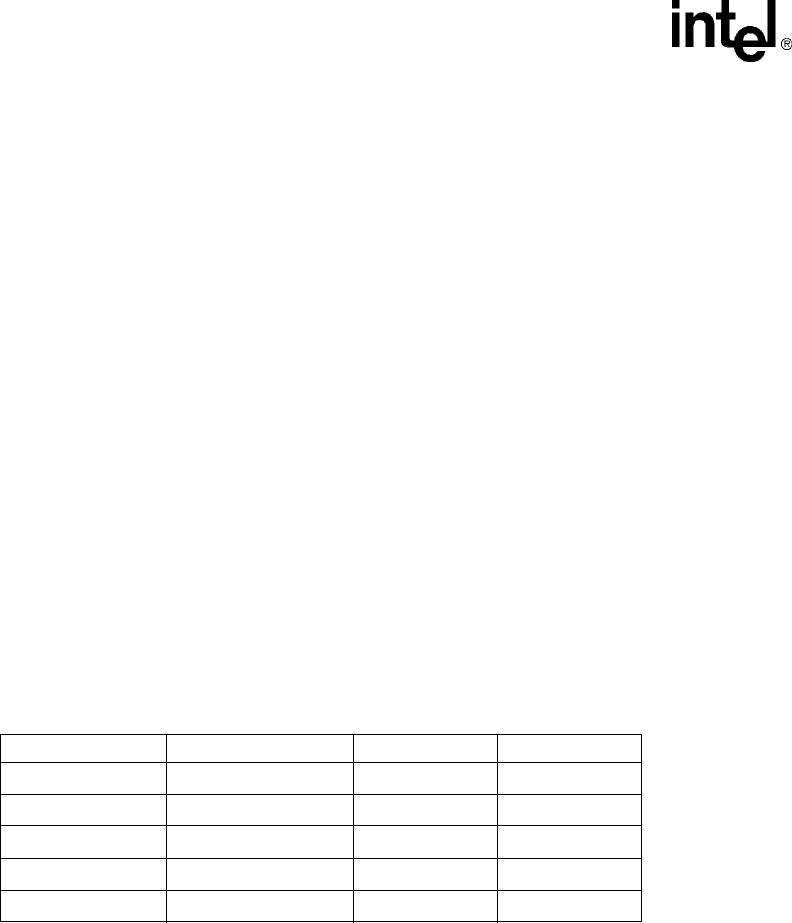User's Manual
Table Of Contents
- Contents
- Figures
- Tables
- Revision History
- About This Publication
- 1. Product Description
- 2. Programming Models
- 3. Device Handling
- 4. Event Handling
- 5. Error Handling
- 6. Application Development Guidelines
- 7. Call Progress Analysis
- 7.1 Call Progress Analysis Overview
- 7.2 Call Progress and Call Analysis Terminology
- 7.3 Call Progress Analysis Components
- 7.4 Using Call Progress Analysis on DM3 Boards
- 7.5 Call Progress Analysis Tone Detection on DM3 Boards
- 7.6 Media Tone Detection on DM3 Boards
- 7.7 Default Call Progress Analysis Tone Definitions on DM3 Boards
- 7.8 Modifying Default Call Progress Analysis Tone Definitions on DM3 Boards
- 7.9 Call Progress Analysis Errors
- 7.10 Using Call Progress Analysis on Springware Boards
- 7.11 Call Progress Analysis Tone Detection on Springware Boards
- 7.12 Media Tone Detection on Springware Boards
- 7.13 Default Call Progress Analysis Tone Definitions on Springware Boards
- 7.14 Modifying Default Call Progress Analysis Tone Definitions on Springware Boards
- 7.15 SIT Frequency Detection (Springware Only)
- 7.15.1 Tri-Tone SIT Sequences
- 7.15.2 Setting Tri-Tone SIT Frequency Detection Parameters
- 7.15.3 Obtaining Tri-Tone SIT Frequency Information
- 7.15.4 Global Tone Detection Tone Memory Usage
- 7.15.5 Frequency Detection Errors
- 7.15.6 Setting Single Tone Frequency Detection Parameters
- 7.15.7 Obtaining Single Tone Frequency Information
- 7.16 Cadence Detection in Basic Call Progress Analysis (Springware Only)
- 8. Recording and Playback
- 8.1 Overview of Recording and Playback
- 8.2 Digital Recording and Playback
- 8.3 Play and Record Functions
- 8.4 Play and Record Convenience Functions
- 8.5 Voice Encoding Methods
- 8.6 G.726 Voice Coder
- 8.7 Transaction Record
- 8.8 Silence Compressed Record
- 8.9 Recording with the Voice Activity Detector
- 8.10 Streaming to Board
- 8.11 Pause and Resume Play
- 8.12 Echo Cancellation Resource
- 9. Speed and Volume Control
- 10. Send and Receive FSK Data
- 11. Caller ID
- 12. Cached Prompt Management
- 13. Global Tone Detection and Generation, and Cadenced Tone Generation
- 13.1 Global Tone Detection (GTD)
- 13.1.1 Overview of Global Tone Detection
- 13.1.2 Global Tone Detection on DM3 Boards versus Springware Boards
- 13.1.3 Defining Global Tone Detection Tones
- 13.1.4 Building Tone Templates
- 13.1.5 Working with Tone Templates
- 13.1.6 Retrieving Tone Events
- 13.1.7 Setting GTD Tones as Termination Conditions
- 13.1.8 Maximum Amount of Memory for Tone Templates
- 13.1.9 Estimating Memory
- 13.1.10 Guidelines for Creating User-Defined Tones
- 13.1.11 Global Tone Detection Application
- 13.2 Global Tone Generation (GTG)
- 13.3 Cadenced Tone Generation
- 13.3.1 Using Cadenced Tone Generation
- 13.3.2 How To Generate a Custom Cadenced Tone
- 13.3.3 How To Generate a Non-Cadenced Tone
- 13.3.4 TN_GENCAD Data Structure - Cadenced Tone Generation
- 13.3.5 How To Generate a Standard PBX Call Progress Signal
- 13.3.6 Predefined Set of Standard PBX Call Progress Signals
- 13.3.7 Important Considerations for Using Predefined Call Progress Signals
- 13.1 Global Tone Detection (GTD)
- 14. Global Dial Pulse Detection
- 14.1 Key Features
- 14.2 Global DPD Parameters
- 14.3 Enabling Global DPD
- 14.4 Global DPD Programming Considerations
- 14.5 Retrieving Digits from the Digit Buffer
- 14.6 Retrieving Digits as Events
- 14.7 Dial Pulse Detection Digit Type Reporting
- 14.8 Defines for Digit Type Reporting
- 14.9 Global DPD Programming Procedure
- 14.10 Global DPD Example Code
- 15. R2/MF Signaling
- 16. Syntellect License Automated Attendant
- 17. Building Applications
- Glossary
- Index

150 Voice API Programming Guide — June 2005
Global Tone Detection and Generation, and Cadenced Tone Generation
Tips and Hints for Building Tone Templates
The following are tips and hints when building a tone template for global tone detection:
• After using a build-tone function to define a new tone template, you must call dx_addtone( )
to add the tone template to a channel and enable detection of that tone on a channel.
• After using a build-tone function to define a tone template, if the template is not added to a
channel, the next call to a build-tone function will overwrite the tone definition contained in
the previous template.
• Only one tone template can be created at a time; however, multiple tone templates can be
added to a channel. Each channel can have a different set of tone templates. Once created, tone
templates can be selectively disabled or enabled by using dx_distone( ) and dx_enbtone( ).
See Section 13.1.5, “Working with Tone Templates”, on page 150 for more information.
• Each tone template must have a unique tone ID.
• On Windows, do not use tone IDs 261, 262 and 263; they are reserved for library use.
• A particular tone template that has been added to a channel cannot be changed or deleted. A
tone template can be disabled on a channel, but to delete a tone template, all tone templates on
that channel must be deleted. See Section 13.1.5, “Working with Tone Templates”, on
page 150 for more information.
Table 14 lists some standard Bell System Network call progress tones. The frequencies are useful
to know when creating tone templates.
13.1.5 Working with Tone Templates
After building a tone template, use the following functions to add/delete tone templates or to
enable/disable tone detection:
dx_addtone( )
Adds a tone template that was defined by the most recent build-tone function call to the
specified channel. Adding a tone template to a channel downloads it to the board and enables
detection of tone-on and tone-off events for that tone template.
Table 14. Standard Bell System Network Call Progress Tones
Tone Frequency (Hz) On Time (msec) Off Time (msec)
Dial 350 + 440 Continuous
Busy 480 + 620 500 500
Congestion (Toll) 480 + 620 200 300
Reorder (Local) 480 + 620 300 200
Ringback 440 + 480 2000 4000










